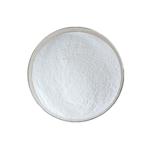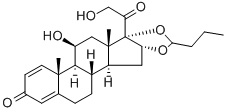Budesonide: Uses, Mechenism of action, and Side effects
Introduction
Budesonide, sold under the brand name Pulmicort, among others, is a corticosteroid medication. It comes in tablets, capsules, granules, and tablets that dissolve in your tongue. It is available in inhalers, nebulization solutions, pills, nasal sprays, and rectal forms. These different types of budesonide medicine have various brand names and are used for different conditions.

Uses
Budesonide extended-release capsules are indicated for the treatment and maintenance of mild to moderate Crohn's disease. Various inhaled budesonide products are indicated for prophylactic therapy in asthma and to reduce exacerbations of COPD. A budesonide nasal spray is available over the counter for symptoms of hay fever and upper respiratory allergies. Extended-release capsules are indicated to induce remission of mild to moderate ulcerative colitis, and rectal foam is used to treat mild to moderate distal ulcerative colitis. In addition, a delayed-release capsule formulation of budesonide is indicated to reduce proteinuria in adults with IgA nephropathy at risk of rapid disease progression. Budesonide is indicated to treat eosinophilic esophagitis (EoE). For this indication, it is only approved for use in adults in Europe, while it is approved for short-term use (12 weeks) in patients 11 years of age and older in the US.
Mechanism of action
Budesonide is a potent topical anti-inflammatory agent. It binds and activates glucocorticoid receptors (GR) in the effector cell (e.g., bronchial) cytoplasm that allows the translocation of this budesonide-GR complex in the bronchi nucleus, which binds to both HDCA2 and CBP (HAT). This budesonide-CBP (HAT) receptor complex prevents the production of inflammatory genes (inhibition of gene transcription) that might cause bronchoconstriction. Also, the budesonide-receptor complex activates the HDCA2, increasing gene expression and reducing the formation of cytokines such as ILs and TNF. It also inhibits the activation of the eosinophils by increasing apoptosis and suppresses the activation of inflammatory cells such as mast cells, neutrophils, T-lymphocytes, macrophages, and dendritic cells. The overall inhibition of ILs and TNF leads to reduced airway inflammation and hyperreactivity, causing inhibition of the bronchospasm, wheezing, and coughing.
Side effects
This medication usually has fewer side effects than corticosteroids because budesonide works in the gut, and only small amounts are absorbed into the body. Nausea, abdominal pain, or headache may occur.
Because this drug weakens the immune system, it may lower the ability to fight infections. Tell the doctor right away if the patient has any signs of infection (such as sore throat that doesn't go away, fever, chills, or cough). This medication may sometimes cause oral thrush or a new yeast infection. Contact the doctor if the patient notices white patches in your mouth, a change in vaginal discharge, or other new symptoms.
The severe side effects including easy bruising/bleeding, puffy face, unusual weight gain, menstrual period changes, mental/mood changes (such as depression, mood swings, agitation), muscle weakness/pain, bone pain, thinning skin, slow wound healing, increased thirst/urination, vision problems, symptoms of stomach/intestinal bleeding (such as stomach/abdominal pain, black/tarry stools, vomit that looks like coffee grounds).
This is a partial list of possible side effects.
See also
Lastest Price from Budesonide manufacturers

US $8.89/KG2025-04-21
- CAS:
- 51333-22-3
- Min. Order:
- 1KG
- Purity:
- 99%
- Supply Ability:
- 10 mt

US $0.00/Kg/Bag2025-04-21
- CAS:
- 51333-22-3
- Min. Order:
- 2Kg/Bag
- Purity:
- 0.99
- Supply Ability:
- 20 tons


